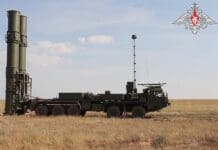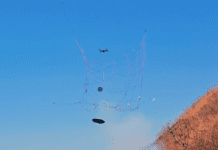This post is also available in:
 עברית (Hebrew)
עברית (Hebrew)
Master Sgt. Dominic Garcia is the emergency management flight chief from the 2nd Civil Engineer Squadron of the US military. He devised the concept of robot dogs when reflecting on his deployment in Syria, where he saw canine teams on some of the chemical, biological, radiological, and nuclear missions (CBRN), and wondered if there was a way to arm the dogs with detectors instead of sending an entire team into a potentially hazardous environment.
Garcia created robot dogs to replace Airmen in life-threatening situations and withstand dangerous environments.
He worked with AFWERX (a program in the US Air Force meant to connect Airmen with technology developers to turn creative ideas into reality) and connected with Ghost Robotics to build the robot dogs.
The team began with two user-friendly robotic canines and tested the functionality of the robot dogs before advancing to test their capabilities to tackle CBRN materials incidents. The team tested the dogs’ CBRN readiness by putting them through radioactive sites and arming them with detectors capable of simultaneously detecting various threats. They then tested the detectors, sensor data feedback, communication, and terrain performance.
Garcia’s focus while developing the dogs was to design equipment that could save Airmen’s lives. He said in addition to preventing the soldiers from risking their lives, the robots could fill operational gaps and increase the manpower in hazardous specialties.
Garcia said he is inspired by the adaptability and eagerness displayed by the newer generation of Airmen and he hopes he has paved a path for the many Airmen who have innovative ideas: “The robot dogs are amazing. I love them, and I believe they’re going to save lives. What we’re doing for the career field, I think is awesome because we’re the first ones in the whole emergency management career field doing this, but the more important message is, we need to be able to be more open.”
This information was provided by DVIDS.


























